
Авиационная промышленность продолжает расширять границы в дизайне самолетов, а последний широкофюзеляжный двухмоторный самолет Boeing иллюстрирует это неустанное стремление к инновациям.
Boeing 777X представляет собой значительный скачок вперед в коммерческой авиации, включая GE9X, крупнейший в мире и самый мощный реактивный двигатель, который станет самым длинным пассажирским самолетом из когда-либо построенных.
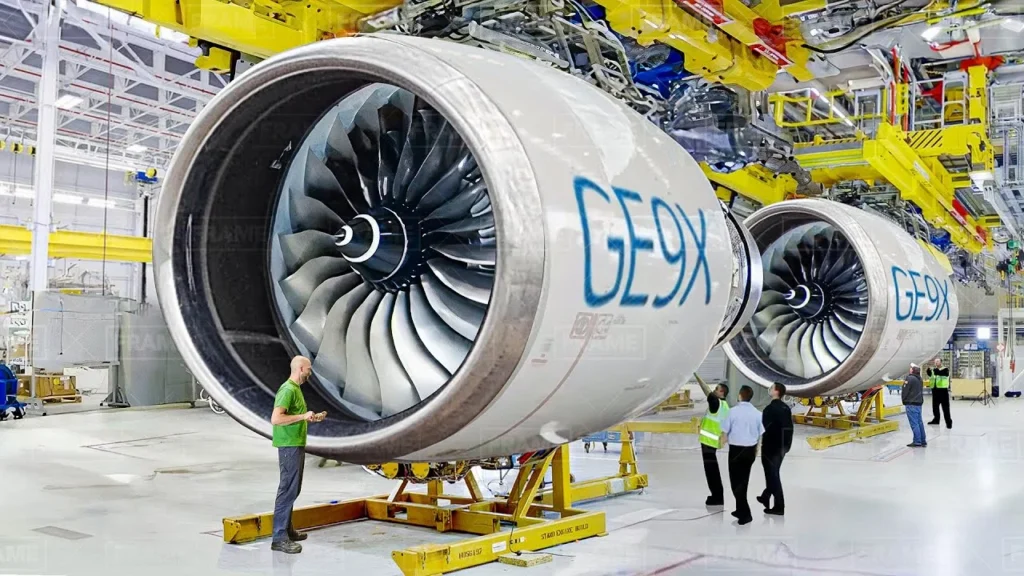 Фото: FRAME | YouTube
Фото: FRAME | YouTubeBoeing 777X GE9X Двигатель
Boeing 777X является самым амбициозным коммерческим проектом Boeing, который планируется ввести в эксплуатацию в 2026 году с немецким перевозчиком Lufthansa (LH), ведущим инаугурационные операции.
Впечатляющие характеристики самолета включают замечательную длину. 251 фут 9 дюймов Для варианта 777-9, превосходящего даже культовый Boeing 747-8 и двухэтажный Airbus A380 в общей длине.
Этот массивный двухмоторный самолет может вместить более 425 пассажиров в более крупной конфигурации 777-9, в то время как меньший вариант 777-8 вмещает около 395 пассажиров.
Силовой установкой, управляющей этим авиационным гигантом, является General Electric GE9X, который является крупнейшим в мире коммерческим реактивным двигателем.
Эти двигатели имеют необычайный диаметр вентилятора 134 дюйма и обеспечивают тягу в 110 000 фунтов, устанавливая новые ориентиры в технологии двигателей коммерческой авиации.
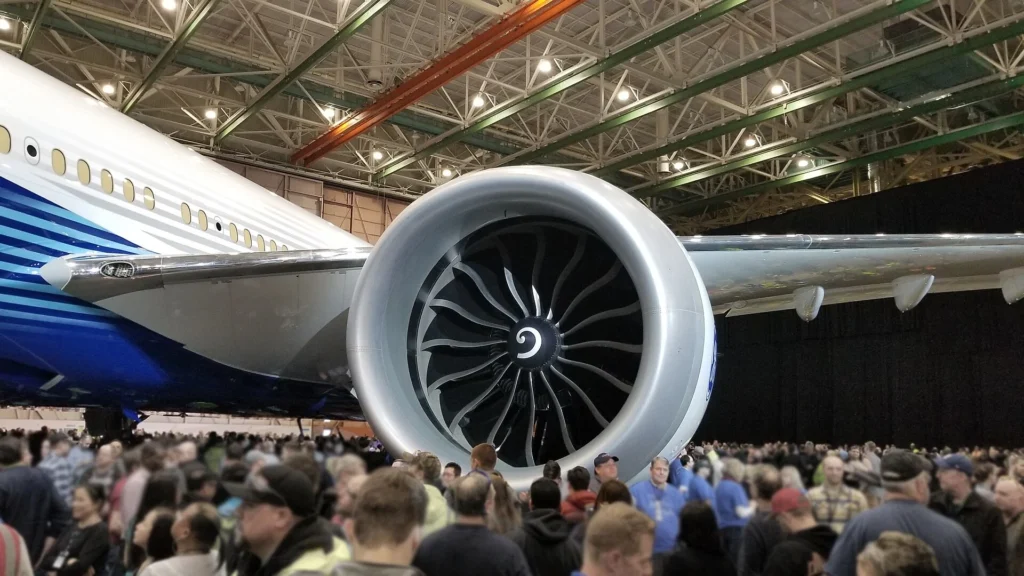 Двигатель GE9X для Boeing 777-9; фото: Дэн Невилл из Сиэтла | Wikimedia Commons
Двигатель GE9X для Boeing 777-9; фото: Дэн Невилл из Сиэтла | Wikimedia CommonsТехнические характеристики двигателя
Двигатели GE9X, работающие на 777X, представляют собой шедевр аэрокосмической техники. Каждый двигатель весит около 21 000 фунтов и имеет общий диаметр 184 дюйма, включая корпус гондолы.
Диаметр вентилятора составляет 134 дюйма, что на 6 дюймов больше, чем у двигателей GE90, которые питают нынешние самолеты Boeing 777-200 и 777-300.
Двигатель включает в себя 16 композитных лопастей вентилятора из углеродного волокна, что на 6 меньше, чем у его предшественника GE90. Это снижение количества лопастей в сочетании с использованием передовых материалов значительно снижает общий вес двигателя при сохранении исключительной производительности.
Впечатляющие характеристики двигателя становятся еще более замечательными, если учесть его возможности управления воздухом. оперировать в a высокий коэффициент обхода 10:1GE9X может обрабатывать и продвигать до 3850 фунтов воздуха каждую секунду при работе при максимальной тяге.
Эта огромная пропускная способность значительно способствует исключительной эффективности и эксплуатационным характеристикам двигателя.
 Фото: Boeing
Фото: BoeingМассивный размер двигателя
Значительные размеры Boeing 777X и максимальная взлетная масса 775 000 фунтов потребовали двигателя, способного генерировать огромную тягу для безопасных операций.
Несмотря на впечатляющий рейтинг тяги GE9X в 110 000 фунтов, эта цифра представляет меньшую мощность, чем у GE9X. Двигатель GE90-115B, который производит 115 000 фунтов. Однако это явное снижение требований к мощности связано с высокоэффективной аэродинамической конструкцией 777X.
Самолет имеет обширные крылья, которые покрывают 5025 квадратных футов, создавая исключительные характеристики подъемника. Эти крылья позволяют 777X достичь на 20% большей топливной эффективности по сравнению с Boeing 777-300ER.
По словам руководителя программы GE9X Теда Инглинга, инженерная команда Boeing добилась значительных улучшений эффективности в отношении подъема к перегрузке самолета, что снизило требования к тяге, несмотря на большие размеры самолета.
При сравнении двухмоторной конфигурации 777X с другими крупными коммерческими самолетами преимущество в мощности становится очевидным.
Airbus A380 использует 4 двигателя, каждый из которых производит тягу около 75 000 фунтов, в то время как Boeing 747-8 использует четыре двигателя мощностью 66 500 фунтов каждый.
777X имеет схожие характеристики с двумя двигателями, демонстрируя замечательную эффективность своего дизайна.
 Фото: Boeing
Фото: BoeingТехнология снижения шума
Несмотря на огромные размеры, GE9X включает в себя передовые технологии снижения шума, которые делают его удивительно тихим во время работы. Высокий коэффициент обхода двигателя 10:1 не только повышает топливную эффективность, но и значительно снижает уровень шума, направляя больше воздуха вокруг ядра двигателя, а не через него.
General Electric утверждает, что GE9X представляет собой Самый тихий турбореактивный двигатель Компания когда-либо производила один фунт статической тяги.
Вместо того, чтобы полагаться на традиционные шевроны для снижения шума, которые могут создавать штрафы за сопротивление, GE9X включает в себя инновационные технологии. Конструкция сопла Технология, которая устраняет эти компромиссы.
Двигатель также имеет сложные сотовая акустическая обработка внутри своей выхлопной системы. Эта технология включает в себя бурение тысяч микроскопических отверстий в композитных материалах кожи для улавливания и подавления шума.
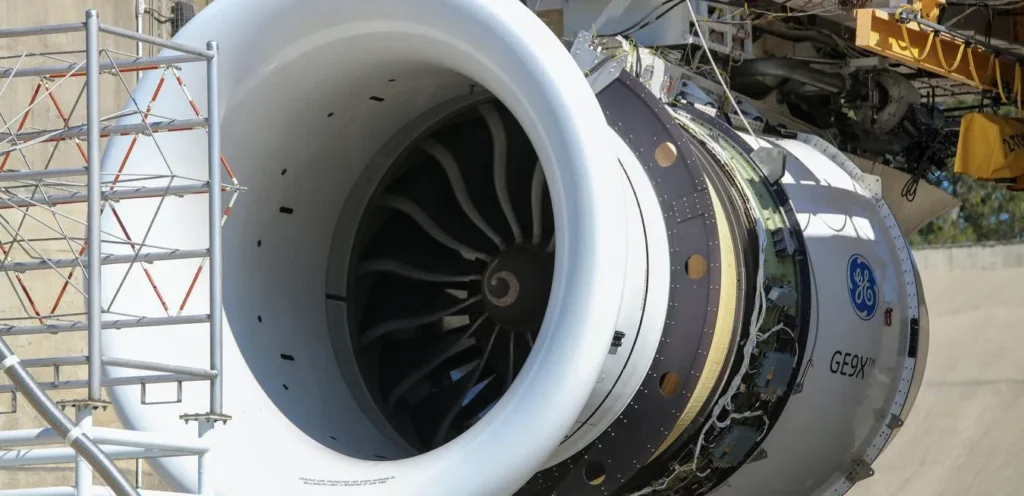 Источник: GE Aerospace
Источник: GE AerospaceПроцесс тестирования и сертификации
GE9X претерпел то, что General Electric описывает как Самая строгая программа тестирования История коммерческих авиационных двигателей компании.
Этот обширный режим испытаний включал 27 000 рабочих циклов и 17 000 часов комплексных испытаний, включая 1600 циклов, специально предназначенных для проведения испытаний. тестирование на проглатывание пыли Моделирование реальных условий эксплуатации.
Во время наземных испытаний в 2017 году GE9X достиг замечательной мощности тяги. 134 300 фунтов стерлинговУстановление нового мирового рекорда, официально признанного Книгой рекордов Гиннеса.
Процесс сертификации двигателя включает 72 испытательных полета Налет составляет более 430 часов, демонстрируя надежность и производительность в различных условиях эксплуатации.
Boeing 777X завершил свой первый полет в январе 2020 года, совершив примерно четырехчасовой перелет из Пейн-Филд в Нью-Йорк. Boeing Field (BFI). В то время как программа испытывала некоторые задержки из-за различных технических проблем, GE9X успешно получил сертификацию типа FAA в 2020 году.
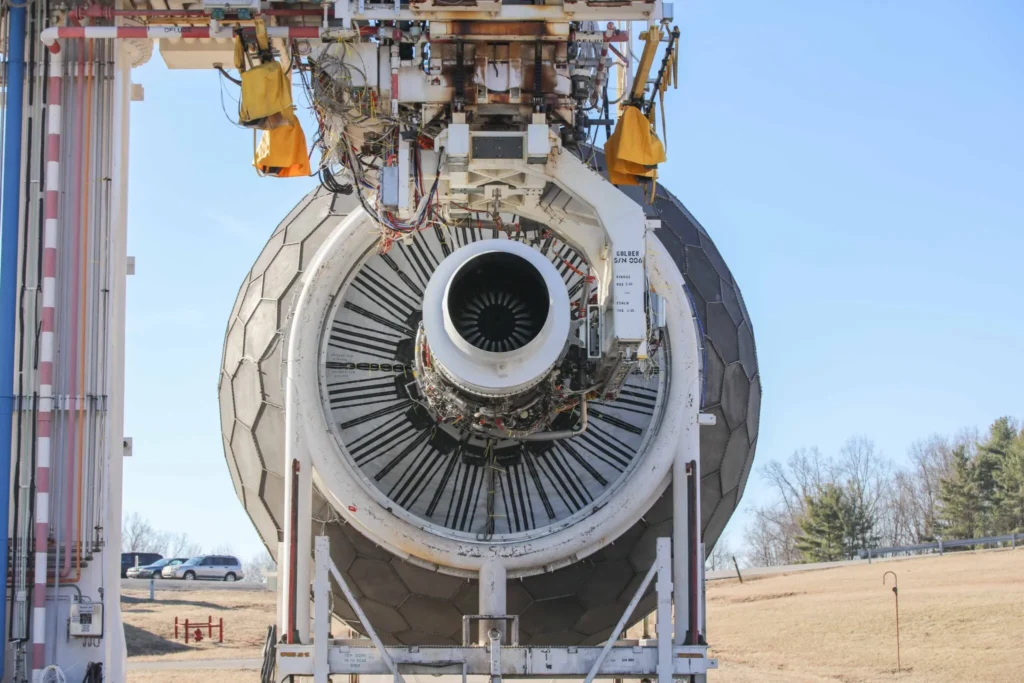 Источник: GE Aerospace
Источник: GE AerospaceПрогноз производства и рынка
General Electric начала полномасштабное производство двигателей GE9X Дарем, Северная Каролина, объект, Новые двигатели регулярно завершают производство и переходят к испытаниям в Огайо перед отправкой на сборочный завод Boeing в Эверетте.
Boeing накопил более 480 заказов на пассажирские версии 777X, а также 59 дополнительных обязательств для грузового варианта.
Большинство этих заказов указывают на более крупный вариант 777-9 с примерно 440 заказами, в то время как более короткий 777-8 привлек более 40 заказов.
Основными клиентами являются Emirates (EK) и Qatar Airways (QR), а первый заказчик Lufthansa (LH) должен получить свою первую поставку 777-9 в конце 2026 года.
Для поддержки глобального парка 777X General Electric планирует инвестировать более одного миллиарда долларов в течение следующих четырех лет для улучшения обслуживания, ремонта и капитального ремонта во всем мире.
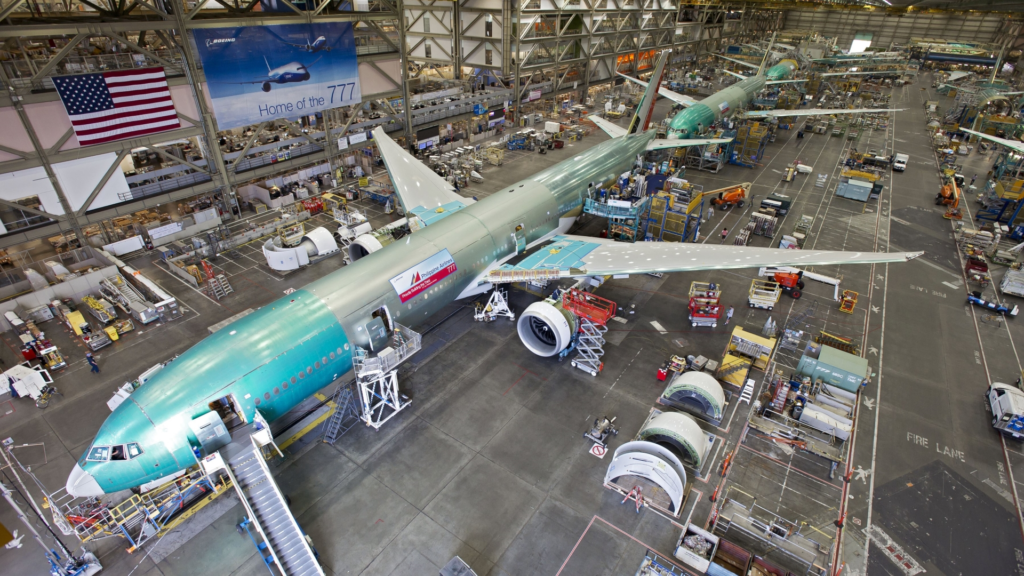 Фото: Boeing
Фото: BoeingНижняя линия
Массивные двигатели Boeing 777X GE9X представляют собой кульминацию десятилетий развития аэрокосмической техники, сочетая беспрецедентные размеры с замечательной эффективностью и экологическими показателями.
Двигатели GE9X, вероятно, будут влиять на будущие программы разработки двигателей и демонстрировать продолжающуюся эволюцию технологий коммерческой авиации.
Оставайтесь с нами. Следуйте за нами в социальных сетях для последних обновлений.
Присоединяйтесь к нам в Telegram Group для последних обновлений авиации. Следуйте за нами в Google News
Самый большой двигатель в мире для питания 777X пройдет тест на проглатывание пыли
Пост-инжиниринг Marvel Behind Boeing 777X Самый большой двигатель в мире впервые появился на Aviation A2Z.










